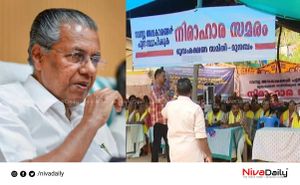India and Japan are taking major strides to bolster their defense cooperation, particularly as regional tensions escalate. This evolution was highlighted during Indian Defence Minister Rajnath Singh's recent visit to Laos, where he participated in high-profile meetings at the 11th ASEAN Defence Ministers’ Meeting-Plus (ADMM-Plus) forum.
On November 15, 2024, just days before Singh's discussions, the two nations signed the Memorandum of Implementation for their ambitious project involving the Unified Complex Radio Antenna (UNICORN). The agreement is aimed at fortifying India's naval platforms with advanced communication technologies, enhancing their stealth capabilities. Notably, the UNICORN mast is expected to consolidate several communication systems, making warships significantly less detectable.
This agreement marks the first significant technology transfer between the two countries since they embarked on their defense partnership discussions back in 2015. Previously, India and Japan engaged on matters of defense equipment transfer, but the UNICORN collaboration is poised to set a precedent for future joint manufacturing efforts.
Bharat Electronics Limited (BEL), India’s state-run defense company, is set to co-develop this technology with Japanese firms. The incorporation of UNICORN technology is not just about enhancing naval warfare capabilities; it symbolizes India's broader ambition to achieve self-reliance and technological independence in defense production.
According to both Singh and Japanese Defence Minister General Nakatani, their meeting opened discussions about new cooperation avenues, especially focusing on co-production and enhanced interoperability between their armed forces. There’s also talk about establishing clearer frameworks for logistics and administrative support through the proposed Reciprocal Provision of Supply and Services Agreement.
"The two ministers reaffirmed the pivotal nature of India-Japan ties within the framework of the broader Indo-Pacific strategy, emphasizing the need for multilateral defense cooperation, especially considering the challenges posed by nations attempting to alter the existing geopolitical order through force," the statement from the Japanese Defence Ministry noted.
At the ADMM-Plus forum, Singh also met with the Philippines' Secretary of National Defence, Gilberto Teodoro, committing to deepen defense ties amid shared regional threats, particularly concerning maritime security. The Philippines has now been welcomed as India’s country coordinator for ASEAN, paving the way for increased collaboration on defense technology and counter-terrorism efforts.
Further, there’s been significant focus on joint exercises, technology exchange, and perhaps the inclusion of subject-matter expert exchanges to broaden areas of cooperation.
Rajnath Singh’s visit to Laos was marked not only by conversations around military frameworks but also by cultural exchanges. He paid respects at the Wat Sisaket temple, highlighting the significance of soft diplomacy alongside military relations.
The backdrop to these developments is the growing assertiveness of China within the Indo-Pacific region, which has deeply concerned both India and Japan. Both nations recognize this rising challenge as prompting necessary adaptations and advancements within their defense policies.
Japan has been adjusting its defense posture, revising its pacifist policies, including easing restrictions on arms exports. These changes reflect Japan’s concern over regional stability and its commitment to counter the influence of China.
The recent spatial shifts—highlighted by Japan’s enhanced military ties with India—are not only strategic but also reflective of global geopolitical dynamics reshaping alliances and defense strategies. Keeping this global perspective, India and Japan are also exploring cooperation beyond just military domains, including areas like semiconductors and artificial intelligence as part of their broader strategic alignment.
With the implementation of the UNICORN mast, the Indian Navy will gain access to cutting-edge technologies aimed at elevational stealth, central to modern naval warfare. The composite antenna, initially developed for Japan’s Future Frigate Multirole class vessels, showcases exceptional engineering prowess, allowing optimal space utilization and reducing vulnerability to detection.
The antenna’s design is fundamentally innovative. Unlike traditional antennas, which can clutter ship decks and impact stealth abilities, UNICORN offers a singular streamlined option. This not only helps maintain lower radar cross sections but also enhances logistical operations with easier maintenance and repairs.
India, facing the unique pressures posed by Chinese military strategies, must respond effectively to the advanced naval capabilities of its regional rival. Strengthening its military ties with Japan through co-development initiatives like the UNICORN anticipation serve as key counterbalances to potential threats.
The partnership's implications extend beyond mere technology enhancement; it embodies shared interests and values between the two nations, fostering the vision of a free, open, and rules-based Indo-Pacific order.
The successful establishment of this defense framework, optimistic as it is, faces challenges inherent to international geopolitical relations. Yet with persistence and mutual resilience, India-Japan relations may redefine security partnerships across the Indo-Pacific watershed.
Both nations are gearing up for future engagements including bilateral exercises, technology transfer milestones, and multilateral dialogues, reaffirming their commitment to safeguard regional stability.
The advancements, especially with the UNICORN technology, are indicative of the progressive military strategies being embraced by India and Japan—a narrative of collaborative defense and resilient partnership set against the ever-evolving backdrop of global power dynamics.



